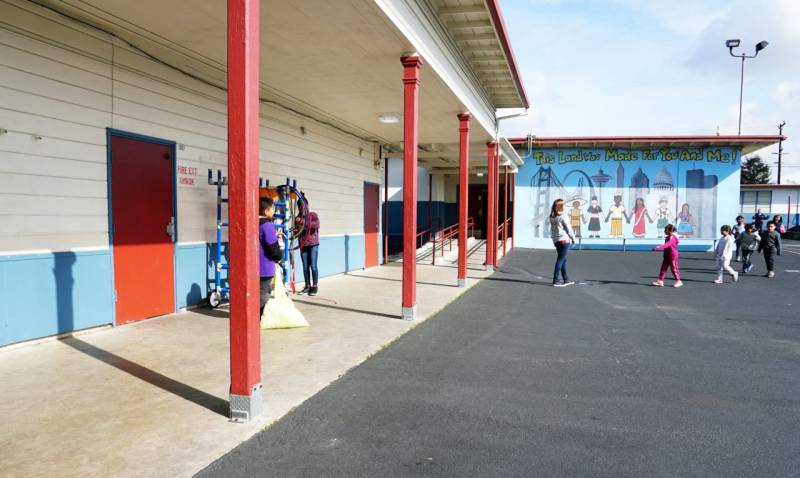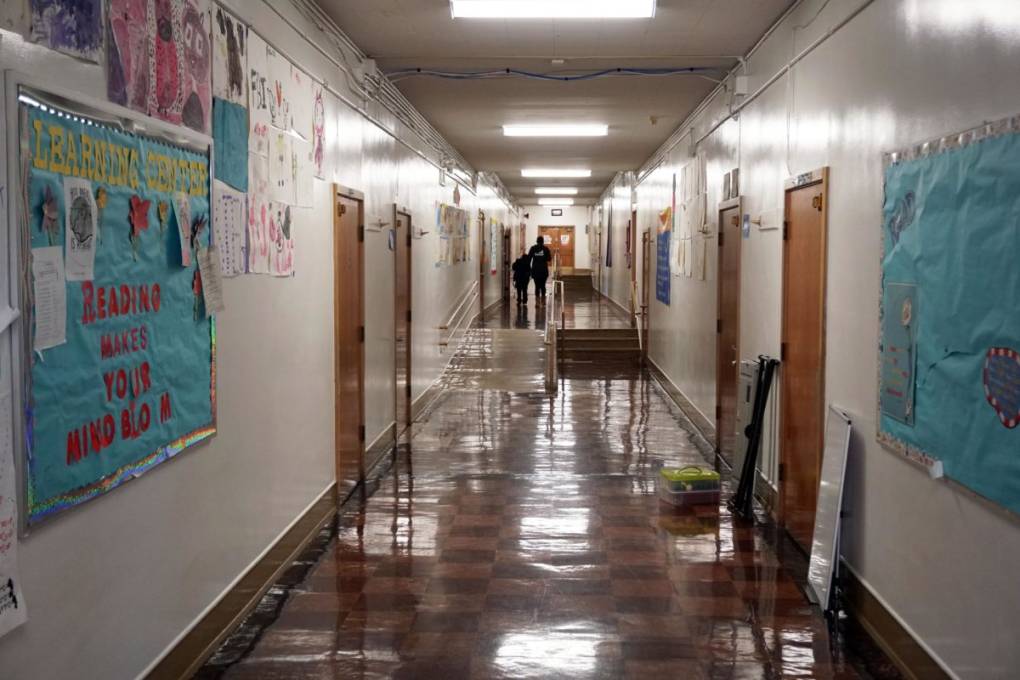To a greater or lesser extent, these are problems facing many urban districts across California, including some larger neighbors around the Bay Area.
San Francisco Unified also got a new superintendent last month and is grappling with severe budget deficits and intense pressure to close schools.
While Oakland Unified’s superintendent, Kyla Johnson-Trammell, is still in her job after seven years, surviving a teacher strike, the pandemic, and other travails, the district is dealing with similar profound challenges. Both San Francisco and Oakland also face the prospect of a state takeover.
Last Wednesday, at West Contra Costa’s first board meeting of 2025, Moses issued a blunt warning about the need to make further budget cuts to avoid insolvency.
After making $19 million in cuts during the current year, the district still has a “significant structural deficit,” she said, and warned that under current scenarios, its budget reserves “will be exhausted within three years.”
Without further reductions in the next two school years, the district would be “placed under (state) receivership, which means we’ll no longer be in charge of making financial decisions for our district,” she said.
In 1991, the district had the unfortunate distinction of being the first in the state to go insolvent. To rescue it, the district received a $29 million bailout loan, which took 21 years to pay off. Now, it is trying to head off a similar fate.
In December, the West Contra Costa school board passed a budget that members said met the standard to receive a “positive certification,” which, under state regulations, means it would not spend its entire reserve over the next three years.
However, the county office of education has refused to approve that certification without the district providing a multiyear deficit-reduction plan. That is what Moses presented to the board on Wednesday night, involving cuts of $7 million next year and an additional $6 million the following year.
Declining enrollment — by 8% over the past four years alone — is perhaps West Contra Costa’s primary concern, according to Michael Fine, CEO of California’s Fiscal Crisis and Management Assistance Team, an agency created by the state to help districts resolve financial and management problems.
Fine largely attributes the decline — which is mirrored in many other districts and the state as a whole — to lower birth rates.
“It’s a long-term problem” for schools, he said. “Right now, schools are feeling it most in kindergarten and elementary school. In 10 years, it will be middle school, then high school.”
The problem translates directly into money. In California, schools have a variety of sources of funds, but they are primarily based on “average daily attendance,” that is, the number of kids in the classroom each day. In 2022-23, the district received nearly $24,000 per student from various sources, most of it from the state based on actual attendance, according to Ed-Data.
As enrollment declines — either through lower birth rates or families leaving the expensive Bay Area — so, too, does the district’s revenues. Another factor reducing income is the end of the federal government’s Elementary and Secondary School Emergency Relief fund, designed to help with COVID-19 recovery. The fund brought the district some $53 million by 2023.
All of which has had an effect on West Contra Costa Unified’s budget.
One approach the district is examining to reduce its deficit is so-called “purpose-based budgeting.” The method, designed to more tightly control expenses, is to evaluate how well specific funds match the district’s priorities.
But that may not be enough.
“Look, I understand. No one joins a school board to lay off people,” Fine said. “But your revenue is going away, and they’re overstaffed compared to their enrollment.”
However, Francisco Ortiz, president of United Teachers of Richmond, the union representing teachers, said there are already too many unfilled positions in West Contra Costa, and the district cannot afford to save more by further reducing staff.
“In secondary schools alone, we have 27 vacant FTEs — full-time equivalent (positions),” he said. “And in elementary, it’s 30.8 vacancies and 22 in special ed. The majority of these folks are teachers, some counselors, in elementary, but the majority are classroom teachers.” Most schools, he said, have to use substitutes on a daily basis.



